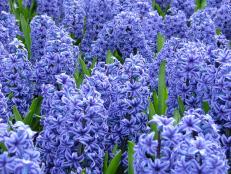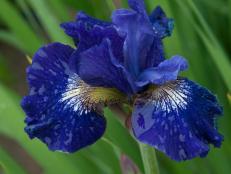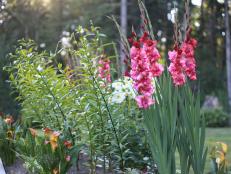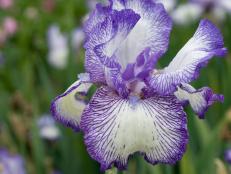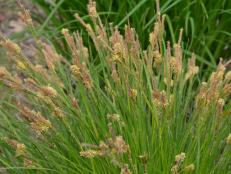How to Grow and Care for Easter Lilies
The Easter lily is a perennial bulb forever associated with the Easter holiday. Get Easter lily care tips including how to replant Easter lily bulbs outside and how to keep the blooms coming.

ibulb.org
The Easter lily that graces your home each spring is steeped in tradition. There's the tradition of a flower that symbolizes purity and new life, an echo of the spring season and the religious holiday. But there's also a lesser known tradition that centers on a small part of the West Coast running from Point St. George, California, to Brookings-Harbor, Oregon. In that sliver of land, tucked between giant redwoods and the Pacific Ocean, 95 percent of the world's Easter lily bulbs are grown on a handful of family farms.
Native to three southern islands in Japan, Easter lilies arrived on the West Coast as bulbs tucked into the suitcase of a World War I soldier, who went on to become one of the region's top lily bulb growers. It takes 1,000 days for an Easter lily bulb to reach the 7-inch size that's sold to greenhouses for spring sales.

ibulb.org
That means the potted Easter lily you buy each spring is already a 3-year-old bulb, mature enough to unfurl a few fragrant flowers in the pot — and absolutely ready to take a place in your garden. From the holiday pot to the garden border, learn how to grow Easter lilies.
Choosing an Easter Lily
Potted Easter lilies are bulbs that have been forced — or tricked — into flowering for the Easter holiday (just like you can force tulips or daffodils to bloom indoors in winter). When buying your lily, look for a plant that's roughly twice as tall as the pot. The stem should have plenty of deep green leaves. If leaves are crinkled, wilted or have dark spots, skip that plant.
To enjoy the longest bloom time in your home, select a plant with just one or two open flowers and plenty of developing buds. Check the plant over carefully for any signs of insects, webbing or holes in leaves. If you see any of these signs of pests, choose a different plant.
Caring for an Easter Lily
When you get your Easter lily home, give it a spot near a bright window. Keep it where the temperature will stay even, away from drafts or blasts of heat from a fireplace or heating vent. Cool air (60 to 65 degrees) helps flowers last longer. Ideal night temperatures are 55 to 60 degrees.
Aim to keep soil consistently moist, watering before it completely dries out and the plant wilts. Don't let the lily sit in water — too-wet soil can lead to bulb rot. Always check to make sure the plastic wrapper around a lily plant isn't full of water.
Carefully snip or pinch the yellow anthers from each bloom. This helps flowers to last longer, and it also helps keep bright yellow lily pollen from staining flower petals or surfaces in your home. If pollen falls onto fabric, use a brush to flick it away or the sticky side of tape to lift it away. Placing pollen-stained fabric in bright sunlight can remove any stains.

ibulb.org
When a flower fades, pinch it from the plant where it attaches to the stem. To keep the plant alive after flowering, place it in bright light and continue to water when the soil is dry.
Planting Easter Lilies Outside
Tuck Easter lilies into the garden after all danger of frost is past. Choose a spot with full sun in well-drained soil (provide afternoon shade in warmest regions). In that coastal area where Easter lily bulbs are grown, the soil is mostly clay and gravel broken up by organic matter that's washed down the coastal hills for centuries. The resulting soil drains well but is also fertile — and it's lily-growing heaven.
Transplant the bulb into the ground at the same depth it was in the pot or a few inches deeper (a good idea in northern regions). Ideally the bulb should be 3 inches deep, with 12 to 18 inches between plants. If the Easter lily seems to be rootbound, loosen roots before planting. You can also let the soil in the lily pot dry out, allow the plant to go dormant, and plant the bulb in your garden in the fall.
After planting, the leaves and stem may turn brown (clip that off at ground level), but new growth will soon emerge from the soil near the base of the plant. These bulbs prefer a cool root zone, so plan to mulch over soil. Use an organic material, like shredded bark or pine straw, or a living mulch, such as a groundcover or shallow-rooted annuals. For a perennial groundcover, try a low-growing catmint (Nepeta), sedum or isotoma; for an annual, use sweet alyssum, portulaca or petunia. Typically an Easter lily flowers in summer.

ibulb.org
When the growing season ends, leaves will naturally turn brown and die. Cut stems to 3 inches for winter. In colder zones, mulch well after soil freezes to help protect bulbs. Feed plants with a slow-release fertilizer or bulb food in spring, after new growth appears. Scratch fertilizer lightly into soil, applying it about 2 inches away from stems.
Garden Design Ideas for Easter Lilies
Easter lilies can create beautiful drifts of fragrant color in a perennial garden border. A mature bulb can produce stems with 12 to 15 blooms per plant. Over time, Easter lilies multiply, forming clumps of color in the garden.

ibulb.org
These lilies make a wonderful addition to cutting gardens. Plant enough that you can snip stems and bring them indoors to enjoy the floral perfume. If you have a moonlight garden or white-themed garden, Easter lilies are a perfect fit.
46 Cottage Gardens We Love 31 Photos
The perfect partner for a charming cottage is a colorful and oh-so-delightful landscape.
Pair Easter lilies with shrub roses for a fragrant planting, or plant them near hydrangeas for a classic romantic scene. These lilies blend beautifully in a cottage garden and also grow well in containers. Easter lilies can survive winter in pots outdoors in USDA Plant Hardiness Zones 7 and higher. In colder regions, shift containers indoors for winter. Let soil dry so bulbs stay dormant. Resume watering in spring to jumpstart growth.
Varieties of Easter Lilies
The botanic name of an Easter lily is Lilium longiflorum. It's also known as a trumpet lily or bugle lily, thanks to those tubular, 3- to 7 inch-long blooms. The lily that's potted and sold each spring is white, but you can find varieties that open flowers in other colors, too. You may have to order these from specialty bulb companies.
Here are a few of the more commonly available Lilium longiflorum varieties:
- 'Triumphator' — white blossoms with rose-pink throats
- 'Elegant Lady' — fragrant, blush-pink flowers (sometimes sold as 'Pink Easter Lily')
- 'Deliana' — creamy yellow blooms
- 'Snow Queen' — white blossoms
- 'White Heaven' — pure white flowers









